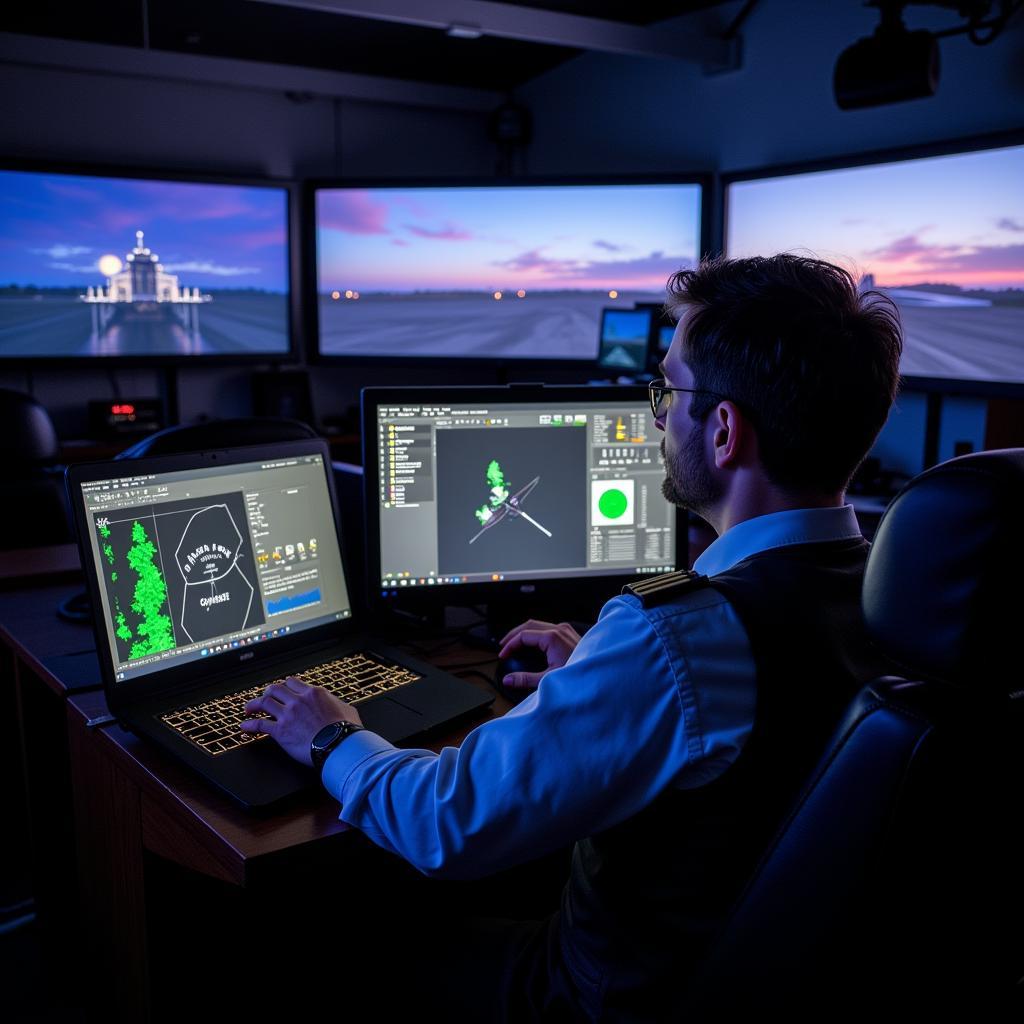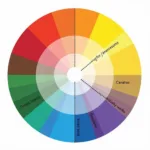Can you be color blind and be a pilot? This is a common question for aspiring aviators. The answer isn’t a simple yes or no. It’s more nuanced, involving different types of color blindness and varying regulations. Understanding these complexities is crucial for anyone dreaming of taking to the skies.
 Pilot Checking Cockpit Instruments
Pilot Checking Cockpit Instruments
Understanding Color Blindness and Its Impact on Piloting
Color blindness, or color vision deficiency, affects how a person perceives colors. It’s typically a genetic condition, although certain diseases, medications, and injuries can also cause it. Several types exist, ranging from mild to severe. The most common type is red-green color blindness, where individuals have difficulty distinguishing between shades of red and green. This can pose challenges for pilots, as they rely on color-coded lights and signals for navigation and safety. can pilots be color blind This link provides further information on the topic.
Types of Color Blindness and Their Implications
Different levels of color blindness exist, and some are more restrictive than others. For instance, mild forms might not significantly impair a pilot’s ability to perform essential tasks, while more severe forms can create significant safety risks. Understanding these distinctions is critical for determining eligibility for various pilot licenses.
- Mild Color Blindness: Individuals with mild color blindness might only have difficulty distinguishing subtle color differences. They can often compensate for their condition and perform adequately in many piloting roles.
- Moderate Color Blindness: Moderate color blindness can make it more challenging to identify critical color signals, such as runway lights or warning indicators. This can limit a pilot’s options and require specialized testing.
- Severe Color Blindness: Severe color blindness significantly impairs color perception, making it unsafe to operate aircraft. Individuals with this condition are typically not eligible for pilot licenses.
 Airport Runway Lights at Night
Airport Runway Lights at Night
Regulations and Testing for Color Blind Pilots
Aviation authorities worldwide have established regulations regarding color blindness and piloting. These regulations are in place to ensure flight safety and prevent accidents. Aspiring pilots undergo rigorous color vision testing as part of their medical examinations. The specific requirements can vary depending on the country and the type of pilot license sought. can you be color blind in the military
Can I Still Become a Pilot with Color Blindness?
can i be a pilot with color blindness Many aspiring pilots wonder if their color blindness disqualifies them from flying. While some forms of color blindness can limit career options, others do not completely preclude someone from becoming a pilot. For example, some individuals can obtain a restricted license, allowing them to fly during daylight hours under specific conditions.
“I’ve seen many aspiring pilots overcome mild color blindness through dedicated training and adaptive strategies,” says Dr. Amelia Wright, a leading aviation medical examiner. “It’s important to remember that a diagnosis of color blindness doesn’t necessarily mean the end of your flying dreams.”
The Importance of Runway Lights and Color Signals
what color are runway lights Runway lights play a vital role in guiding pilots during takeoff and landing. They are color-coded to provide crucial information about runway alignment and approach angles. Pilots must be able to accurately distinguish these colors to ensure safe operations.
“Color recognition is paramount in aviation,” explains Captain John Davies, a veteran commercial pilot with over 20 years of experience. “Being able to differentiate between runway lights, warning signals, and navigational aids is essential for maintaining situational awareness and making sound decisions in the air.”
 Pilot Using Flight Simulator
Pilot Using Flight Simulator
Color Blindness and Genetics
do you think color blindness is a recessive trait Color blindness is typically an inherited condition, passed down through genes. Understanding the genetic basis of color blindness can help individuals assess their risk and make informed decisions about pursuing a piloting career.
“Genetics plays a significant role in color vision deficiency,” states Dr. Sarah Chen, a geneticist specializing in inherited traits. “It’s important to be aware of your family history and seek genetic counseling if you have concerns about color blindness.”
In conclusion, can you be color blind and be a pilot? The answer depends on the severity and type of color blindness and the specific regulations of the governing aviation authority. While some forms of color blindness may limit career options, they don’t always preclude someone from pursuing their dream of flying.
FAQ
- What are the most common types of color blindness?
- What kind of color vision tests are required for pilots?
- Can I become a commercial pilot with color blindness?
- What are the restrictions for pilots with color blindness?
- Are there any treatments for color blindness?
- How can I improve my color perception?
- Where can I find more information about color blindness and aviation?
Common Scenarios
- An aspiring pilot discovers he has mild red-green color blindness. He wants to know if he can still become a pilot.
- A student pilot fails the color vision test. What are his options?
- A pilot with color blindness wants to upgrade his license. What requirements must he meet?
Further Reading
- Color Blindness and Aviation Careers
- Understanding Color Vision Testing for Pilots
- The Impact of Color Blindness on Flight Safety
Need assistance? Contact us 24/7: Phone: 0373298888, Email: [email protected] or visit us at 86 Cầu Giấy, Hà Nội.

